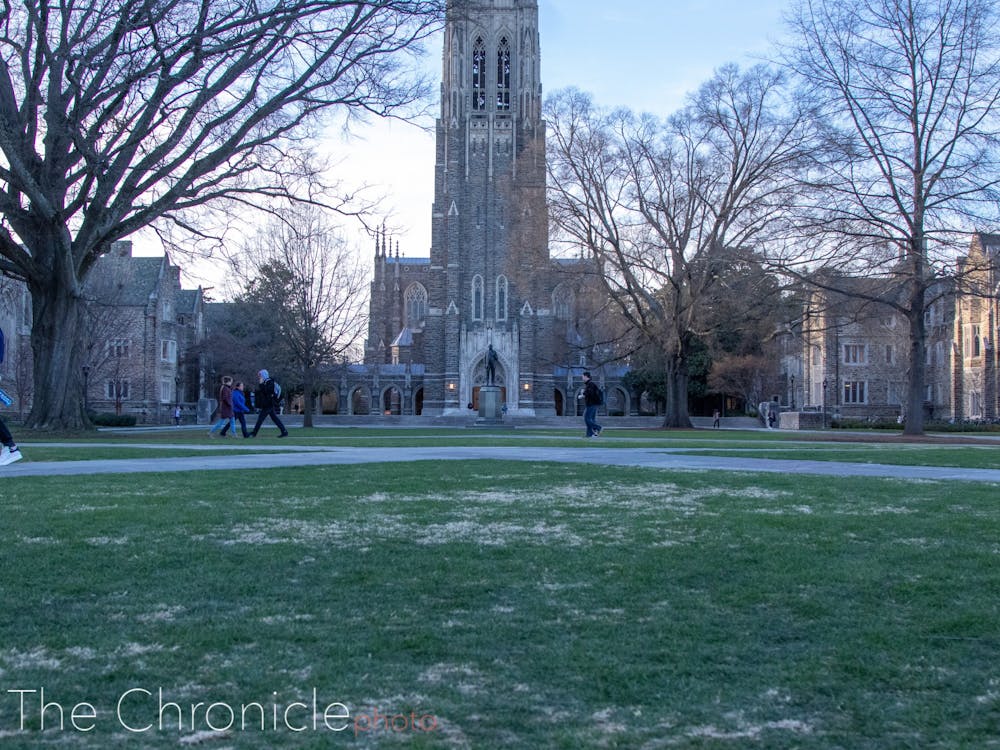Every time you trudge through the grass on Abele Quad as a shortcut to Perkins Library, remember that you’re stepping on something worth more than two years of Duke’s tuition.
The grass on that main lawn, one of the first things to greet visitors to the University, costs approximately $150,000 per year to maintain, wrote Vice President for Facilities John Noonan in an email to The Chronicle.
“It has been studied and verified that student decisions to attend and stay at a school can also [be] related to the appearance of its building and landscape,” Noonan wrote.
The Abele Quad lawn is a cool-season grass best suited for spring and fall climates, wrote Superintendent of Grounds Scott Thompson in an email to The Chronicle. During the summer and winter, the grounds staff primarily focuses on preventative maintenance, including “pest-monitoring, irrigating for plant health and mowing when needed,” he added.
During the busy season of grass care, the grounds staff works on irrigation, aeration, fertilization, seeding, edging and monitoring for diseases.
“For larger events, we will cover the lawn with event flooring to try and mitigate any damage,” Thompson wrote. “We also reduce irrigation to help keep the ground surface firm prior to it receiving heavy foot traffic.”
He explained that the soil undergoes aeration to minimize the effects of compaction after the event, and the normal irrigation cycle recommences along with fertilization.
Athletic field grass, in contrast, is dyed green ahead of sporting events when needed, Thompson noted. Football players have also been told to stay off the turf at Brooks Field at Wallace Wade Stadium.
Beyond recreation and aesthetics, Duke’s greenery provides health and environmental advantages to the campus and those on it. Thompson cited less runoff and erosion, filtration and purification of water, carbon sequestration and improved air quality as some of the benefits of healthy lawns.
There is no specific individual donor for the Abele Quad grass, unlike certain lawns at Duke. Noonan wrote that the cost of other landscaping on campus, such as that around the Brodhead Center and Rubenstein Library, is covered by specific donors as part of the overall cost of the building’s project.
Get The Chronicle straight to your inbox
Sign up for our weekly newsletter. Cancel at any time.

Maria Morrison was a digital strategy director for The Chronicle's 117th volume. She was previously managing editor for Volume 116.

